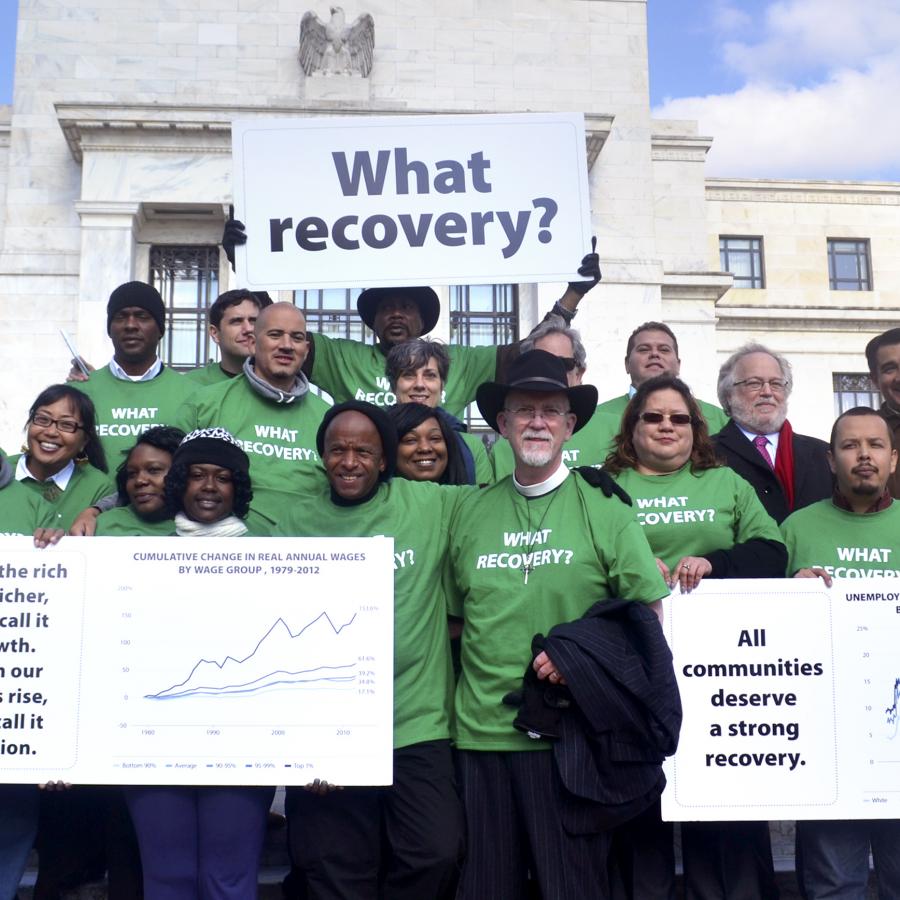Job and wage growth: Strong growth in middle-wage jobs and rising wages for low-wage workers are hallmarks of inclusive growth.
Insights & Analyses
- Middle-wage jobs grew more slowly than high-wage and low-wage jobs between 1990 and 2022.
- While earnings per worker increased by 69 percent for high-wage jobs, they only increased by 30 percent for low-wage jobs and 19 percent for middle-wage jobs.
- Counties in Georgia and Texas ranked among the highest in job growth for both low-wage and high-wage jobs.
- Coastal states like California, Washington and Massachusetts saw the most dramatic gains in earnings for high-wage workers.
Drivers of Inequity
Reduced bargaining power among workers due to declines in union membership and corporate consolidation as well as a higher average unemployment rate have caused incomes for low-wage workers to grow more slowly than those of high-wage workers. Growing trade with low-wage countries, automation, and stagnant minimum wage rates also contribute to income inequality. However, growing income inequality disproportionately impacts women and people of color as these populations are concentrated in low-wage jobs. This trend is a result of historical practices, such as racial segregation and policies that banned women and people of color from accessing education and higher paid professions, as well as ongoing factors, including biased hiring practices and inadequate childcare support.
Strategies
Grow an equitable economy: Policies to create good jobs for all
- Raise the floor on low-wage work by increasing the federal minimum wage or enacting living-wage laws, requiring paid sick days, ending wage theft, strengthening workers' rights to organize, and ensuring fair scheduling.
- Grow good middle-skills jobs in infrastructure, manufacturing, energy, and other sectors.
- Implement sector-focused workforce training and placement programs and apprenticeships that connect workers to good jobs.
- Invest in innovative training and credentialing models that democratize the economic benefits associated with a bachelor’s degree to a wider swath of the workforce, such as paid-on-the-job trainings and portable, stackable credentials and microcredentials to facilitate upward career transitions.
- Leverage public investments and contracting and procurement policies to help entrepreneurs of color and high-road employers grow businesses and create good jobs.
- At the federal level, institute a federal jobs guarantee, dedicate 1 percent of infrastructure investments to a fund for inclusive job and contracting supports, increase the tax rate on capital gains and dividend income, and enforce corporate tax responsibilities by eliminating tax loopholes.
Strategy in Action
Emerald Cities Collaborative creates jobs and builds resilience. ECC is a national network of unions, businesses, advocacy organizations, and local partners that are working to create jobs while making the environment more sustainable through large-scale building retrofit projects. Retrofits are the fastest, most cost-effective way to reduce greenhouse gas emissions, while also creating good, high-road jobs. Currently, five regions (Portland, Seattle, the Bay Area, Los Angeles, and New England) have Emerald Cities initiatives underway. Emerald Cities is also partnering with community colleges to retrofit buildings, train future workers, and connect local residents to the jobs created through targeted hiring strategies. To date, 80 percent of ECC projects pay union or prevailing wages for their workers. Read more.

Resources
Reports: What is going on with wage growth in the United States?; A State Agenda for America’s Workers; What Labor Market Changes have Generated Inequality and Wage Suppression?; The Productivity-Pay Gap; America's Vast Pay Inequality Is a Story of Unequal Power
Data: Metro Monitor 2024; State of Working America; The Unequal States of America: Income inequality in the United States; Nominal Wage Tracker; US Bureau of Labor Statistics Data Tools





